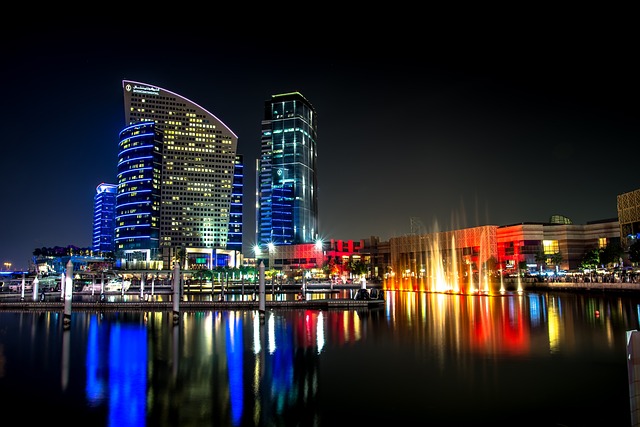
Dubai prime residential values, which encompasses the neighbourhoods of the Palm Jumeirah, Emirates Hills and Jumeirah Bay Island have risen by 88.8% in the last 12 months, according to the latest analysis carried out by global property consultant, Knight Frank.
Faisal Durrani, Partner – Head of Middle East Research, said: “Prime residential values in Dubai continue to strengthen, growing by 29% in Q3 alone, fuelled by a persistent deluge of UHNWI individuals who are zeroing in on Dubai’s premier districts, in search of second homes. This trend marks a significant departure to the emirate’s two previous market cycles, where the overriding flavour of buyers was linked to buy-to-let or buy-to-flip purchases.
“This insatiable demand has fuelled villa price rises of over 100% in locations such as the Palm Jumeirah since the start of the pandemic. Elsewhere, ultra-Prime homes sales, i.e., homes priced at over US$ 10 million have also hit a fresh high. The first nine months of the year have registered 152 ultra-Prime sales, eclipsing last year’s all time high of 93. And in fact, 93 of these deals have taken place in Q3 alone.”
Of Dubai’s three Prime residential districts, the Palm Jumeirah, with an average transacted price of AED 3,054 psf, remains the most affordable, relative to Emirates Hills (AED 5,220 psf) and Jumeirah Bay Island (AED 6,345 psf).
Andrew Cummings, Partner – Head of Prime Residential, added: “The bulk of international buyers are being drawn to Dubai’s unrivalled sun-sea-sand lifestyle, which tends to come with villa purchases, and this is where demand continues to intensify. Indeed, the city just set a new record price, with the sale of an US$ 82 million home on the Palm Jumeirah.
“At around AED 3,200 per square foot, or about US$ 870 per square foot, Dubai’s Prime residential neighbourhoods remain amongst the most affordable in the world. This, combined with the high quality of residential product now available in the upper echelons of the market, is cementing Dubai’s position as one of the world’s leading second homes markets.”
LUXURY HOMES SHORTAGE
Dubai’s perennial challenge, Knight Frank says, has been its ‘build-it-and-they-will-come’ mantra, which has resulted in more homes being built than the market is capable of absorbing. In this cycle however, the number of new homes planned is failing to keep pace with demand.
Durrani explained: “On the surface, with nearly 81,000 units due by the end of 2025, the city appears well supplied. However, once that figure is broken down, we see that just 8 new villas are due in Dubai’s Prime residential areas between 2023 and 2025 – all of which are on Jumeirah Bay Island. Developers have not yet rushed new projects to market as we have seen in the past to capitalise on the tsunami of demand for luxury housing.
“The overriding challenge for the emirate is the shortage of waterfront homes. The revival of Deira Islands as The Dubai Islands should help to alleviate the drought of ultra-prime homes once the development plans are finalised, albeit it is likely to be a few years yet before the first homes are ready to move into here.”
Cummings continued: “International buyers are looking for properties that would not look out of place in Miami, Monaco, or LA. And developers are responding, with contemporary homes, complete with extensive use of glazing and ultra-modern finishes transforming the residential landscape. Smaller, more private developments are particularly popular amongst the international elite. Dubai is quickly moving away from the days of Mediterranean themed homes, with ultra-modern developments quickly starting to dominate.”
MARKET OUTLOOK
In the short to medium term, Knight Frank does not foresee a stalling in demand; in fact, the opposite is forecast. The mainstream market is expected to register a price growth of 5-7% by the end of the year.
For Prime Dubai, prices are likely to end the year around 60-80% higher than 2021. The COVID-comeback cycle which began two and a half years ago has thus far seen values increase by 101% on the Palm Jumeirah and 98% on Jumeirah Bay Island, while Emirates Hills has experienced a near doubling in prices over the same period.
“With increasing global economic uncertainty, Dubai is once again emerging as a safe port in the storm. The unrelenting demand from international UHNWI when combined with the shortage of waterfront homes, the government’s world-leading response to the pandemic, positive business sentiment, one of the most business friendly environments anywhere and arguably some of the globe’s best beach front real estate is what underpins our outlook”,Durrani explained.
Knight Frank does however caution that the global nature of Dubai does leave it somewhat exposed. The impact of the strong dollar on international demand whilst too early to assess, appears limited given the residential market’s relative value when compared to other global gateway cities.
In addition, while rising interest rates will undoubtedly pose challenges to mortgaged buyers, the bulk of purchases (c.80%) are cash transactions, which is expected to shield the market to an extent.
For now, Knight Frank says, Dubai’s residential market outlook remains bright.


































